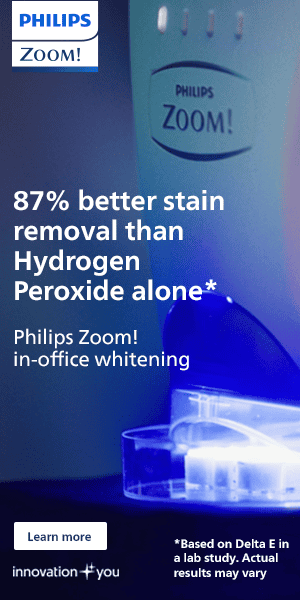PayJunction’s Randy Modos answers questions from Dentistry Today on how payment technology can deliver operational efficiencies through innovation, customer advocacy, and transparent pricing.
By Stan Goff, Senior Managing Editor
Dentistry Today (DT): Many dental practices operate with lean administrative teams. What are the most common inefficiencies you see in front-office workflows that could be addressed with automation?

Randy Modos (RM): One of the most common inefficiencies we see in front-office workflows is the use of payment systems that aren’t integrated with the practice management system. When these systems operate separately, staff are required to manually enter payment data from the processor into the practice management software. This manual transfer not only takes up valuable time that could be spent on patient care, but it also introduces a higher risk of data entry errors. By automating this process through integration, dental practices can significantly reduce administrative burden, improve accuracy and free up staff to focus on more meaningful, patient-facing tasks.
Also, many dental practices still rely on outdated paper-based payment systems to produce paper invoices, receipts, and batch reports. This not only consumes staff time but also leads to errors and subpar customer experiences. Digital invoices are not only preferred by customers, but also improve cash flow at dental practices. Storing digital receipts and payment details in a cloud-based system is also more accessible and eco-friendly than paper.
DT: What are patients looking for in their payment experiences at dental offices? How can dental practices use automation within their practice software to create a smoother patient experience – before, during and after appointments?
RM: Today’s patients expect flexibility and convenience when it comes to payments – and that expectation extends across the entire appointment journey. From the moment they book to the final bill, patients want options that are easy to use, secure and tailored to their preferences.
Dental practices can meet these expectations by leveraging automation tools within their practice management software. Practices can also set up recurring or scheduled payments for ongoing treatment plans, reducing friction for both staff and patients.
Automation also supports smoother post-appointment experiences through tools like remote invoicing and online checkout. These features give patients the flexibility to review and pay their bills on their own time, creating a more modern and patient-friendly financial experience.
DT: Staff burnout and turnover are ongoing challenges in dental care. How can automation support staff retention and satisfaction?
RM: Automation plays a key role in easing the administrative burden that often leads to staff burnout and turnover in dental practices. By streamlining payment processes, automation allows front-office teams to spend less time on repetitive, manual tasks and more time on high-value work that enhances both patient care and job satisfaction.
Features like recurring payment schedules and automated invoice reminders eliminate the need for staff to chase down payments – a task that can be both time-consuming and stressful. Automated chargeback notifications automatically alert back office staff when a chargeback occurs. This gives staff more time to dispute the chargeback, easing the staff’s turnaround time and making owners feel better about retaining more revenue.
Automation also simplifies end-of-month reconciliation by generating detailed batch reports, cutting the process down from hours to just minutes. Additionally, compliance improvements, such as reduced PCI scope and fewer payment disputes, also contribute to long-term ROI. Altogether, these efficiencies help reduce stress, increase productivity and create a more sustainable work environment that supports staff retention.
DT: Some practices worry about the upfront costs of new technology. What advice do you have for evaluating automation tools from a cost-benefit perspective?
RM: When evaluating automation tools, it’s important to look beyond the upfront cost and consider the long-term value they bring to your practice. While the initial investment might seem high, the time savings can be substantial – and time is one of your most valuable resources.
Dental practices can demonstrate the ROI of payment technologies by tracking improvements across financial performance, operational efficiency and patient experience. Financially, they should measure faster payment cycles and lower administrative or processing costs. These improvements often lead to stronger cash flow and higher overall revenue.
Practices can also consider compliant surcharging, which allows them to offset credit card processing fees and protect margins without raising service prices.
By reducing or eliminating manual administrative tasks, automation frees up staff to focus on higher-impact areas like patient care, staff development, special initiatives, or even practice growth. In many cases, the efficiencies gained through automation more than offset the initial cost, delivering a strong return on investment over time. Practices should take a holistic view of both the financial and operational benefits when assessing new technology.
Practices should report on these metrics regularly, comparing pre- and post-implementation data, and incorporate patient feedback to illustrate the full impact of the payment technology.
DT: What role does integrated payment technology play in streamlining day-to-day operations in a dental practice, and how does it compare to more traditional systems?
RM: Integrated payment systems play a critical role in improving the efficiency of day-to-day operations within a dental practice. By eliminating the need for manual data entry, these systems dramatically reduce administrative workload and the potential for human error.

Traditional payment systems often require staff to enter payment information twice – once in the payment terminal and again in the practice management system. This not only consumes valuable time but also increases the risk of discrepancies in patient records. In contrast, integrated payment solutions automatically post payments directly to the patient’s ledger. This streamlines the entire workflow, ensures greater accuracy in financial reporting and allows front-office staff to focus on delivering a better patient experience.
About Randy Modos
Randy Modos is the president and a co-founder of PayJunction, where he provides vision and leadership for the company as it pioneers payment technology and delivers operational efficiencies for businesses. Founded in 2000, PayJunction has consistently redefined the payment processing industry through innovation, customer advocacy, and transparent pricing.




